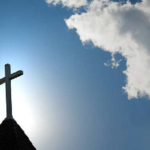TUNISIAN DINAR (TND)- As of last Friday, the Tunisian Dinar’s conversion rate to the dollar was 3.04 Dinars, making it the highest in Africa, with the rise aided by the country’s traditionally low inflation rates. The Tunisian Government has also made it illegal to import, export, or convert dinars into another currency, further strengthening the TND.
LIBYAN DINAR (LYD)- By February 2nd, 2023, the LYD was exchanging at 4.80 to the dollar. Although one of the strongest on the continent, the LYD has progressively plunged in value especially against the US dollar majorly because of a decline in oil prices on international markets. Oil sales are Libya’s primary source of income
MOROCCAN DIRHAM (DH)- The dirham has been insulated by the Morocco government, as it cannot be traded outside the nation and is virtually immune to bank-influenced price swings. The Moroccan dirham is the de facto medium of exchange in the Western Sahara area, and as of Friday last week, it was trading at 10.22 to the US dollar.
GHANAIAN CEDI (GHC)- This is the fourth historical legal currency of the Republic of Ghana, and the most valuable currency in West Africa, and was trading at 12.32 against the dollar. In 2020, the Cedi was rated by Bloomberg as the best-performing African currency in the world against the US dollar.
BOTSWANA PULA (BWP)- This is the strongest currency in South Africa and fifth on the continent, exchanging at 12.82 to the US dollar last Friday. Its appeal is derived from the fact that Botswana has a robust economy, is politically stable and is also because it is traded on the Johannesburg Stock Exchange, Africa’s biggest.
SEYCHELLOIS RUPEE (SR)- At 13.26 to the US dollar, the SR ranks sixth on the African continent and the strongest in East Africa. The SR’s strength is derived from a diversified economy, which enjoys Foreign Direct Investments inflows into the Archipelago, thriving agriculture and fisheries sectors, as well as small-scale industrial industries which have contributed to the largest Gross Domestic Product (GDP) per capita in Africa of $14,653.31 (2021) equivalent to Sh1.8 million.
ERITREAN NAKFA (NFK)- The Nakfa strength can be attributed to the Eritrean Government’s experienced stability throughout the years as a result of the Eritrean government’s preference for a fixed exchange rate as opposed to a floating currency, a factor that has maintained the Nakfa’s stability. As of last month, it was exchanging at the rate of 15 to the US dollar.
SOUTH AFRICAN RAND (R)- The rand’s value is generally pegged to the price of Gold, South Africa’s primary export. As of last Friday, a US dollar was equivalent to 17.18 rands. Lesotho, Namibia and Swaziland peg their currencies to the rand, which unfortunately continues to be affected by global uncertainty because of South Africa’s frail economy and political instability.
ZAMBIA KWACHA(ZMW)- Despite its strength, the Kwacha is avoided by currency speculators perhaps because of erraticism based on the fluctuation of copper prices in the global copper market. During the review period, it was exchanging at 19.28 to the US dollar.
EGYPTIAN POUND (E£)- The EGP completes the list of the top 10 leading currencies on the continent, and was trading at 30.28 to the US dollar by Friday last week. The Egyptian pound is also used as an unofficial currency in Sudan and the Gaza Strip as well as a high nominal GDP which is second to Nigeria, factors that have consolidated its status as one of Africa’s strongest currencies.




